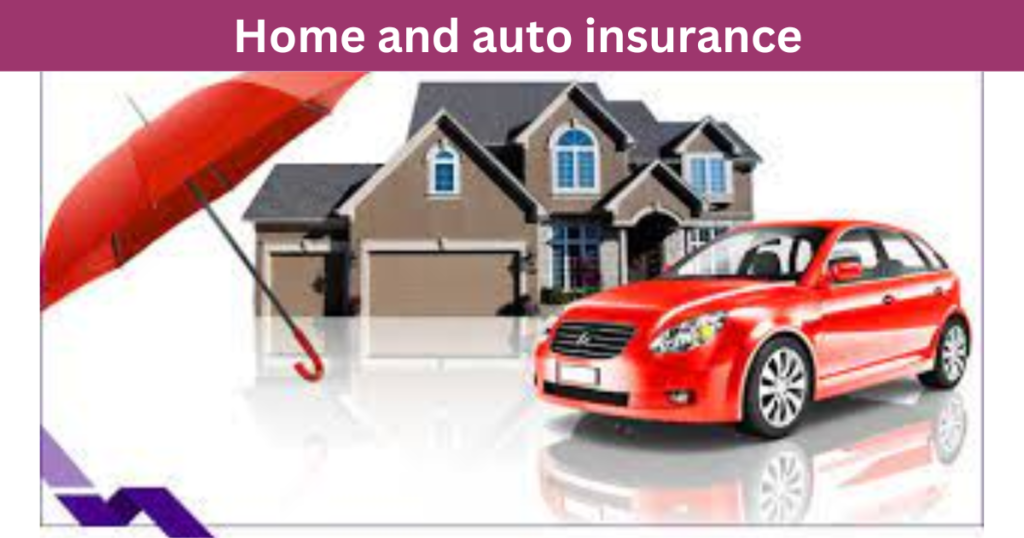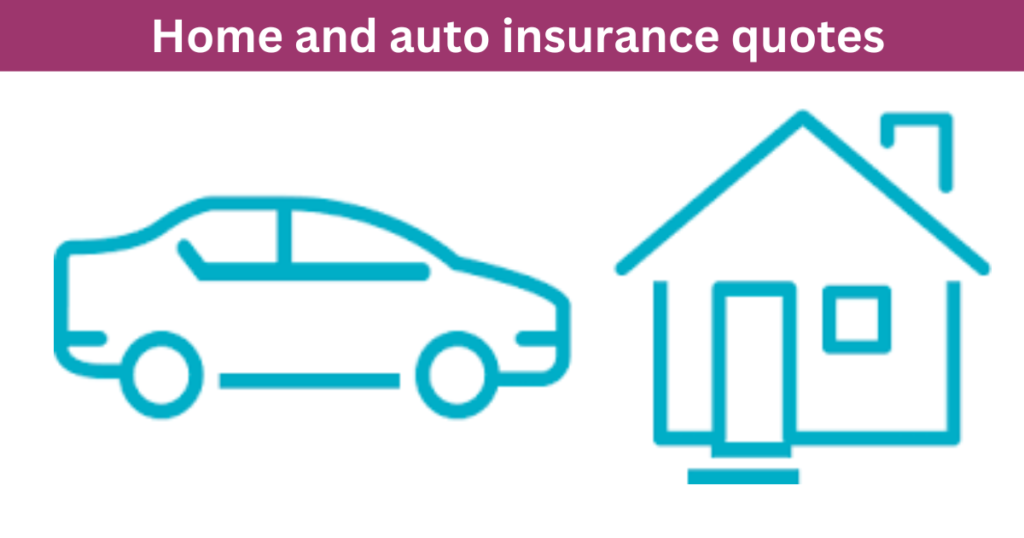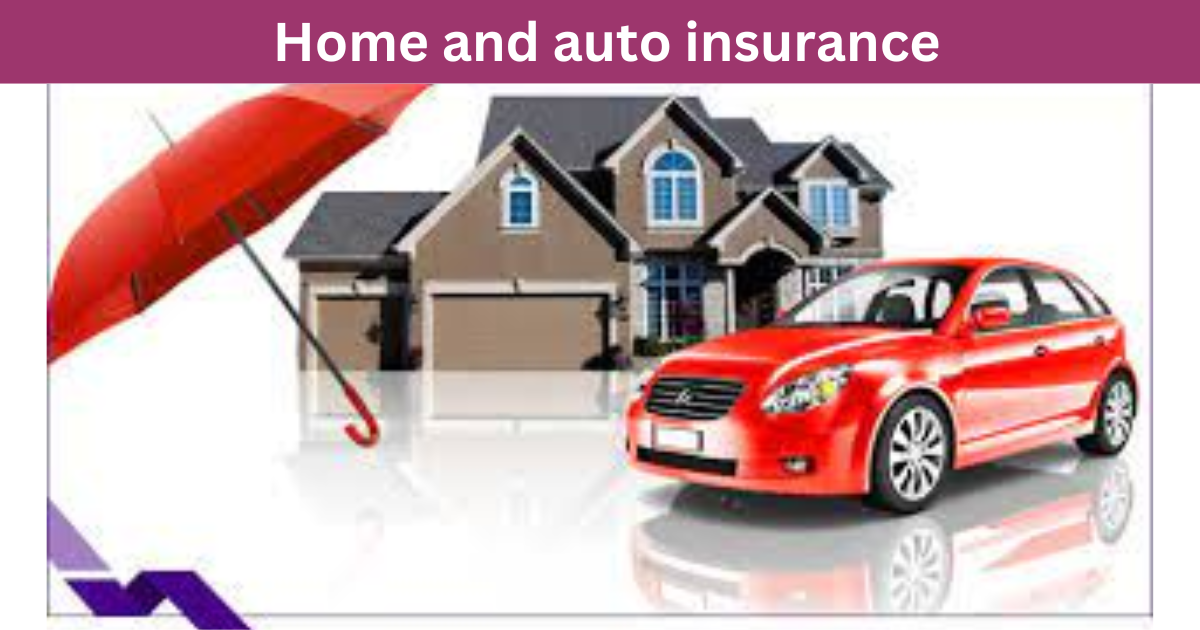What is Home and Auto Insurance?
Home and auto insurance are two separate types of insurance coverage bundled together to provide comprehensive protection for your home and vehicles. Home insurance protects your property, belongings, and liability risks associated with homeownership, while auto insurance covers your vehicles, drivers, and potential liabilities on the road.
Home insurance typically includes coverage for your dwelling, personal property, liability, and additional living expenses. Dwelling coverage reimburses you for repairs or rebuilding your home’s structure if it’s damaged or destroyed by covered perils like fire or severe weather. Personal property coverage protects your belongings, such as furniture, electronics, and clothing, if they are stolen or damaged. Liability coverage shields you from legal claims if someone is injured on your property or if you accidentally damage someone else’s property. Additionally, home insurance often includes coverage for additional living expenses, such as hotel bills or rental expenses, if your home becomes uninhabitable due to a covered loss.

On the other hand, auto insurance offers protection for your vehicles and potential liabilities on the road. It typically includes liability coverage, which pays for bodily injury and property damage you cause to others in an at-fault accident. Collision coverage pays for repairs to your vehicle if it’s damaged in a collision, while comprehensive coverage pays for repairs if your vehicle is damaged by something other than a collision, such as theft or vandalism. Uninsured/underinsured motorist coverage protects you if you’re involved in an accident with a driver who doesn’t have insurance or enough insurance to cover your damages. Personal injury protection covers medical expenses and lost wages for you and your passengers, regardless of fault, in an accident.
Bundling home and auto insurance policies together can offer several benefits. It provides comprehensive protection for your most valuable assets—your home and vehicles. Bundling often results in discounts and cost savings on premiums, making insurance more affordable. Moreover, managing your policies together with the same provider simplifies paperwork, billing, and claims processes, saving you time and hassle. Overall, bundling home and auto insurance policies provides convenience, cost savings, and streamlined coverage management for homeowners who also own vehicles, ensuring that you have the protection you need for all aspects of your life.
Home Insurance Coverage
Home insurance provides financial protection for your home and belongings against various risks, including fire, theft, vandalism, and natural disasters. It typically includes the following types of coverage:
- Dwelling Coverage
- Dwelling coverage is a fundamental component of home insurance that provides financial protection for the structure of your home itself. In the event that your home is damaged or destroyed by covered perils, such as fire, windstorm, hail, or vandalism, dwelling coverage reimburses you for the cost of repairs or the rebuilding of your home’s structure.
- This coverage extends to essential components of your home, including its foundation, walls, roof, floors, and built-in appliances. Dwelling coverage helps homeowners recover from the financial burden of repairing or rebuilding their homes after a covered loss, ensuring that they can restore their primary residence to its pre-loss condition.
- Personal Property Coverage
- Personal property coverage is designed to protect your belongings inside your home from theft, damage, or destruction caused by covered perils. This coverage extends to a wide range of personal possessions, including furniture, electronics, clothing, appliances, and other household items. If your belongings are stolen or damaged due to covered events such as burglary, fire, or vandalism, personal property coverage will pay to repair or replace them up to the policy’s specified limits.
- Personal property coverage provides homeowners with peace of mind knowing that their possessions are protected from unexpected losses, allowing them to replace essential items and maintain their quality of life.
- Liability Coverage
- Liability coverage is an essential component of home insurance that protects homeowners from financial losses associated with legal claims and lawsuits. If someone is injured on your property due to negligence or if you accidentally damage someone else’s property, liability coverage will cover the costs of legal defense, settlements, and judgments up to the policy’s limits. This coverage extends beyond physical injuries to include property damage, medical expenses, pain and suffering, and lost wages.
- Liability coverage provides homeowners with financial protection and legal representation in the event of unforeseen accidents or incidents on their property, helping to safeguard their assets and financial stability.
- Additional Living Expenses (ALE)
- Additional Living Expenses (ALE) coverage is designed to help homeowners cover the costs of temporary living arrangements if their home becomes uninhabitable due to a covered loss. In the event of a fire, severe storm, or other covered peril that renders your home temporarily uninhabitable, ALE coverage will reimburse you for expenses incurred while living away from home.
- This includes costs such as hotel bills, rental expenses, restaurant meals, and other necessary living expenses that exceed your normal expenses. ALE coverage ensures that homeowners and their families can maintain their standard of living and find temporary shelter while their home is being repaired or rebuilt, providing financial assistance during a challenging and stressful time.
Auto Insurance Coverage
Auto insurance provides financial protection for your vehicles and potential liabilities on the road. It typically includes the following types of coverage:
- Liability Coverage
- Liability coverage is a crucial component of auto insurance that protects you financially if you’re responsible for causing bodily injury or property damage to others in an at-fault accident. In the unfortunate event of a car accident where you are deemed to be at fault, liability coverage steps in to cover the medical expenses, rehabilitation costs, and legal fees associated with injuries sustained by other parties involved in the accident.
- Additionally, liability coverage extends to cover the repair or replacement costs of property damaged in the accident, such as vehicles, fences, or structures. This coverage helps shield you from the financial burden of lawsuits and compensation claims, ensuring that you can fulfill your obligations and protect your assets in the event of an accident.
- Collision Coverage
- Collision coverage is a type of auto insurance that pays for repairs to your vehicle if it’s damaged in a collision with another vehicle or object. Whether you collide with another car, hit a stationary object like a pole or fence, or roll over, collision coverage will cover the cost of repairing or replacing your vehicle up to its actual cash value, minus the deductible.
- Collision coverage is essential for protecting your investment in your vehicle and ensuring that you can quickly repair or replace it in the event of an accident. This coverage is particularly valuable for newer or more expensive vehicles where the cost of repairs could be significant.
- Comprehensive Coverage
- Comprehensive coverage, often referred to as “other than collision” coverage, pays for repairs to your vehicle if it’s damaged by something other than a collision. This includes incidents such as theft, vandalism, fire, falling objects, or damage caused by natural disasters like floods or hailstorms.
- Comprehensive coverage provides financial protection for your vehicle against a wide range of non-collision-related risks, ensuring that you’re covered in various scenarios where your vehicle could sustain damage. Like collision coverage, comprehensive coverage reimburses you for the cost of repairs or replacement up to the actual cash value of your vehicle, minus the deductible.
- Uninsured/Underinsured Motorist Coverage
- Uninsured/underinsured motorist (UM/UIM) coverage is designed to protect you if you’re involved in an accident with a driver who either doesn’t have insurance or doesn’t have enough insurance to cover your damages. In such situations, UM/UIM coverage steps in to pay for your medical expenses, lost wages, and other damages that you would typically recover from the at-fault driver’s insurance if they were adequately insured.
- UM/UIM coverage ensures that you’re not left financially vulnerable in the event of an accident caused by an uninsured or underinsured driver, providing peace of mind knowing that you’re protected regardless of the other driver’s insurance status.
- Personal Injury Protection (PIP)
- Personal Injury Protection (PIP) is a type of auto insurance coverage that covers medical expenses and lost wages for you and your passengers, regardless of fault, in an accident. PIP coverage typically includes reimbursement for medical bills, hospital expenses, rehabilitation costs, and lost wages resulting from injuries sustained in a car accident.
- Additionally, PIP coverage may extend to cover other expenses such as childcare, household services, or funeral costs, depending on the policy’s terms and limits. PIP coverage provides essential financial support and peace of mind for you and your loved ones in the event of an accident, ensuring that you can access necessary medical care and maintain financial stability while recovering from injuries.
Benefits of Home and Auto Insurance

Comprehensive Coverage
Comprehensive coverage, available in both home and auto insurance policies, offers broad protection against a wide range of risks, helping to safeguard your assets and financial well-being. In home insurance, comprehensive coverage protects your property and belongings from various perils such as fire, theft, vandalism, and natural disasters. Similarly, in auto insurance, comprehensive coverage protects your vehicle from non-collision-related incidents like theft, vandalism, and damage from falling objects or severe weather. By providing comprehensive protection against a diverse array of risks, comprehensive coverage ensures that you’re adequately prepared for unexpected events that could otherwise result in significant financial losses.
Cost Savings
Bundling home and auto insurance policies with the same provider often leads to discounts and cost savings on premiums. Insurance companies typically offer discounts to policyholders who choose to consolidate their coverage by purchasing multiple policies from the same insurer. By bundling your home and auto insurance policies, you can take advantage of these cost-saving opportunities, reducing your overall insurance expenses and maximizing the value of your coverage. Additionally, bundling allows insurers to streamline their administrative processes and operational costs, which can translate into lower premiums for policyholders.
Convenience
Managing your home and auto insurance policies together offers convenience by simplifying paperwork, billing, and claims processes, saving you time and hassle. Instead of dealing with multiple insurance providers, policies, and payment schedules, bundling allows you to consolidate your coverage under one insurer, streamlining your insurance management. With a single point of contact for both home and auto insurance needs, you can easily access policy information, make changes to your coverage, and handle insurance-related tasks efficiently. This convenience enhances your overall insurance experience, making it easier to stay organized and informed about your coverage.
Peace of Mind
Knowing that your home, vehicles, and liabilities are adequately protected gives you peace of mind, allowing you to enjoy life without worrying about unexpected financial setbacks. Bundling home and auto insurance policies ensures that you have comprehensive protection in place for your most valuable assets, including your home and vehicles. With robust coverage against property damage, liability claims, and other risks, you can feel confident that you’re prepared for whatever life throws your way. This peace of mind allows you to focus on your family, career, and personal pursuits, knowing that you have a reliable safety net in place to protect your financial interests.
Please Read More: Birth injury lawyer Long Island: complete Guide
Please Read More: Claim for birth injuries compensation in united states
Conclusion
I hope that you would have liked some other posts. Friend, if you liked this post, then you must like this post and share it with your friends. I know that you would have liked the given information very much. If you are related to this question, If you have any questions, please leave a leave a comment.
